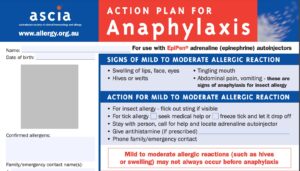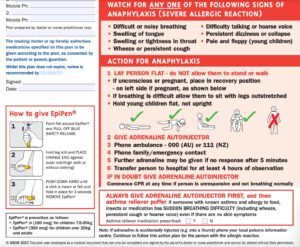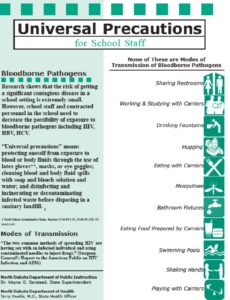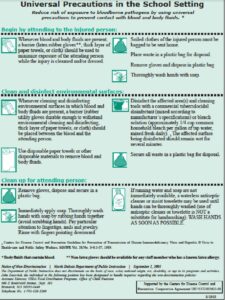This is a resource for providing first aid to common ailments seen at camp. This Is not to be taken as medical advice. If ever in doubt, please escalate to a medical professional or call 911.
Be prepared. Know which students have asthma and where their medicine is kept.
Be alert for students who may have asthma symptoms. Symptoms can become progressively worse and lead to severe, even life-threatening asthma attacks. Treating symptoms promptly can prevent this and allow the student to resume school activities.
Common symptoms of an asthma episode include one or more of these things: Coughing, wheezing (which can sound like noisy breathing or whistling in the chest), difficulty or discomfort when breathing, tightness in the chest (a sensation of heavy weight on the chest or chest pain), shortness of breath, and breathing hard and/or fast.
If a student has asthma symptoms or complaints and needs your assistance,* take these steps.
- Quickly evaluate the situation. Call 911 if the student is struggling to breathe, talk, stay awake, has blue lips, or asks for an ambulance.
- NEVER LEAVE A STUDENT ALONE. Have an adult accompany the student to the health room or send for help from a school nurse or designee. Do not wait.
- Stop the student’s activity. If the episode began after exposure to an allergen or irritant,** remove the student from the allergen or irritant, if possible. Help the student be calm and in a comfortable position.
- Help the student locate and take his/her prescribed quick-relief inhaler medicine.
- Contact the parent/guardian.
- Repeat quick-relief inhaler medicine in 20 minutes if student is still having trouble breathing.
Call 911 if any of the following occur:
- If the student is struggling to breathe, talk, stay awake, has blue lips, or asks for an ambulance.
- If the student doesn’t improve after two administrations of quick-relief medicine, and nurse/designee or parent/guardian is not available.
- If no quick-relief medicine is available, the student’s symptoms have not improved spontaneously, and nurse/designee or parent/guardian is not available.
- If you are unsure what to do.
Remember:
* Many students who carry their own medicine may be able to self-manage asthma episodes. They should follow the school protocol. Provide support as needed.
** Common asthma allergens and irritants include tobacco smoke, pollens, furry animals, cockroach droppings, dust mites, chalk dust, or strong odors (for example, from cleaning products, paints, or perfume).
Source: National Heart Blood and Lung Institute; http://www.nhlbi.nih.gov/health-pro/resources/lung/asthma-steps-to-follow-no-nurse-html
6 things to do if you’re caught without an inhaler during an asthma attack
Asthma needs constant care and proper management at all times. Your very life depends on it. However, should you be caught without your inhaler due to unforeseen circumstances, you could try these coping techniques:
- Sit upright. Stop whatever you are doing and sit upright. Bending over or lying down can constrict your breathing even more.
- Take long, deep breaths. This helps to slow down your breathing and prevent hyperventilation. Breathe in through your nose and breathe out through your mouth.
- Stay calm. Staying calm may prevent further tightening of your chest muscles and make your breathing easier.
- Get away from the trigger. The asthma attack could be triggered by dust, cigarette smoke, car exhaust, or the smell of chemicals (e.g., ammonia, chlorine gas, sulphur dioxide). Get away from the trigger as soon as possible and go to an air-conditioned environment or any place with clean air.
- Take a hot caffeinated beverage. Hot caffeinated drinks like coffee can help to open up the airways slightly, providing some relief for an hour or two.
- Seek emergency medical help. If the wheezing, coughing, and breathing difficulty do not subside after a period of rest, seek immediate medical attention.
Source: Healthxchange.com; http://www.healthxchange.com.sg/healthyliving/ManagingChronicIllnesses/Pages/How-to-Survive-an-Asthma-Attack-if-Youre-Caught-Without-Your-Inhaler.aspx




